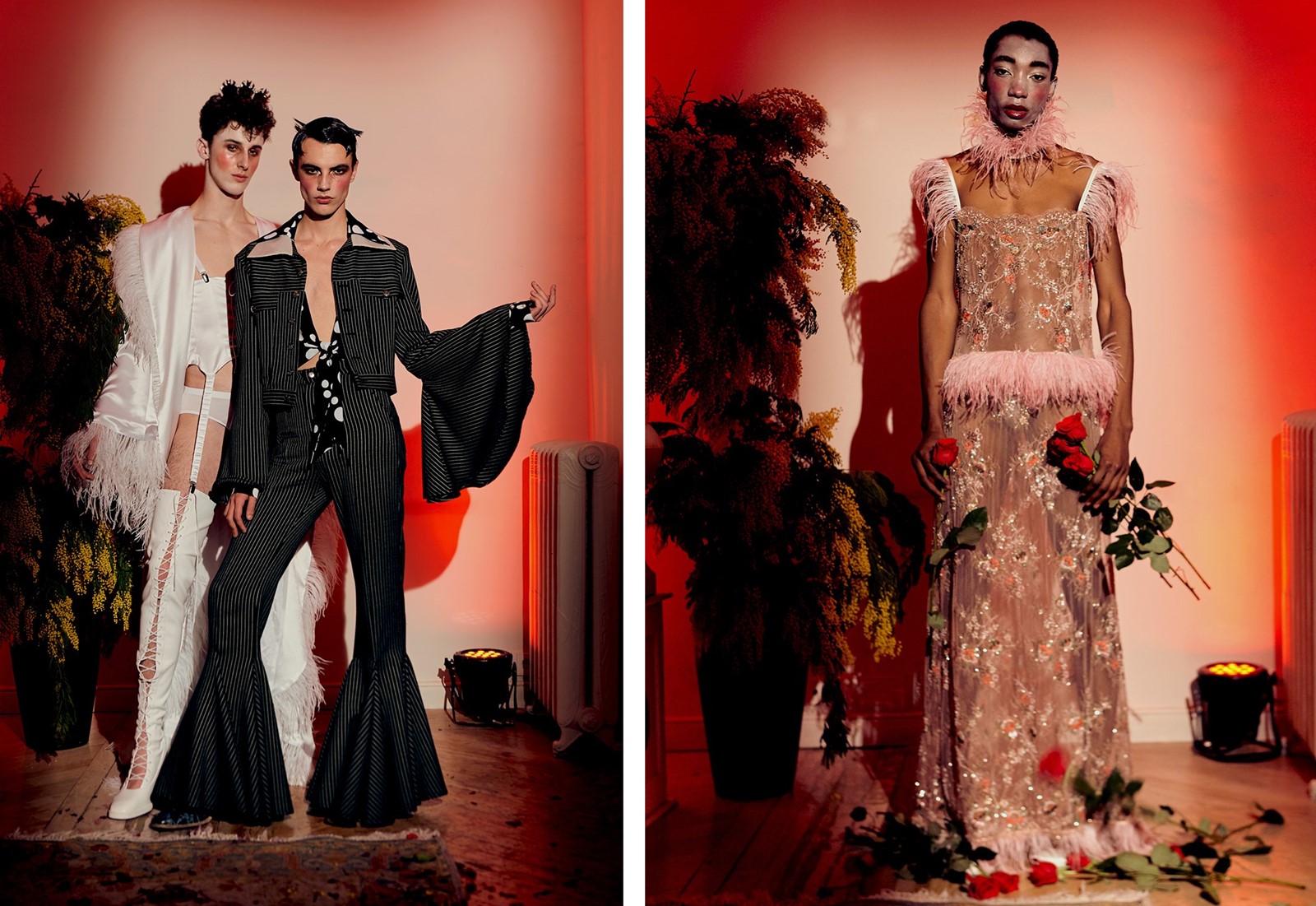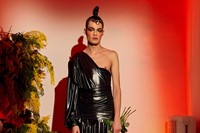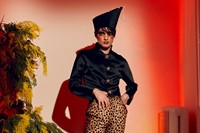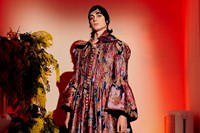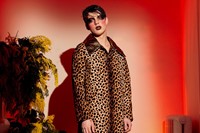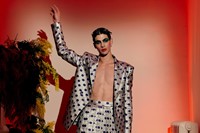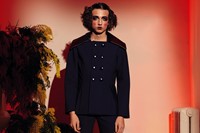Fashion is no stranger to hype. What is precious is when that spectacle has something to say. At the recent round of New York menswear shows, Raf Simons’ American debut wasn’t the only Important Moment – and it definitely wasn’t the sexiest. That honour befell Alejandro Gómez Palomo, whose lascivious, deliciously decadent Palomo Spain collection had everyone from Nicola Formichetti and Hari Nef to Ryan McGinley foaming at the mouth – and was arguably one of the most exciting, reinvigorating moments of the shows. With his opulent collection of lavish brocades and marabou-trimmed capes, netted tulle suiting and foppish organza shirts, it was a wicked, irresistible rejection of convention and categorisation. In a way, it wasn’t even really menswear.
The gender-subverting bent of Palomo’s work is unmissable (his debut collection was named after Virgina Woolf’s Orlando). But the designer finds labels woefully inadequate. “Is it gender fluid or is it unisex or is it no gender? Everybody wants to categorise something so they can understand… For me I don’t actually think that much about that when I’m making the clothes. I just make clothes because I love them and am inspired by them,” he explains. “Androgynous” is a label Palomo particularly loathes, casting it off as “old fashioned”. It does seem inadequate; if anything his poetic, exuberant designs are hyper-feminine. But make no mistake, however much women admire and wear his clothes, Palomo very definitely designs for men – or “boys” as the 24-year-old puts it. “I know how to design for boys and feel really attached to them,” Palomo says. “I design for men because it is my fantasy but I think there’s an eroticism about a woman wearing men’s clothes”.
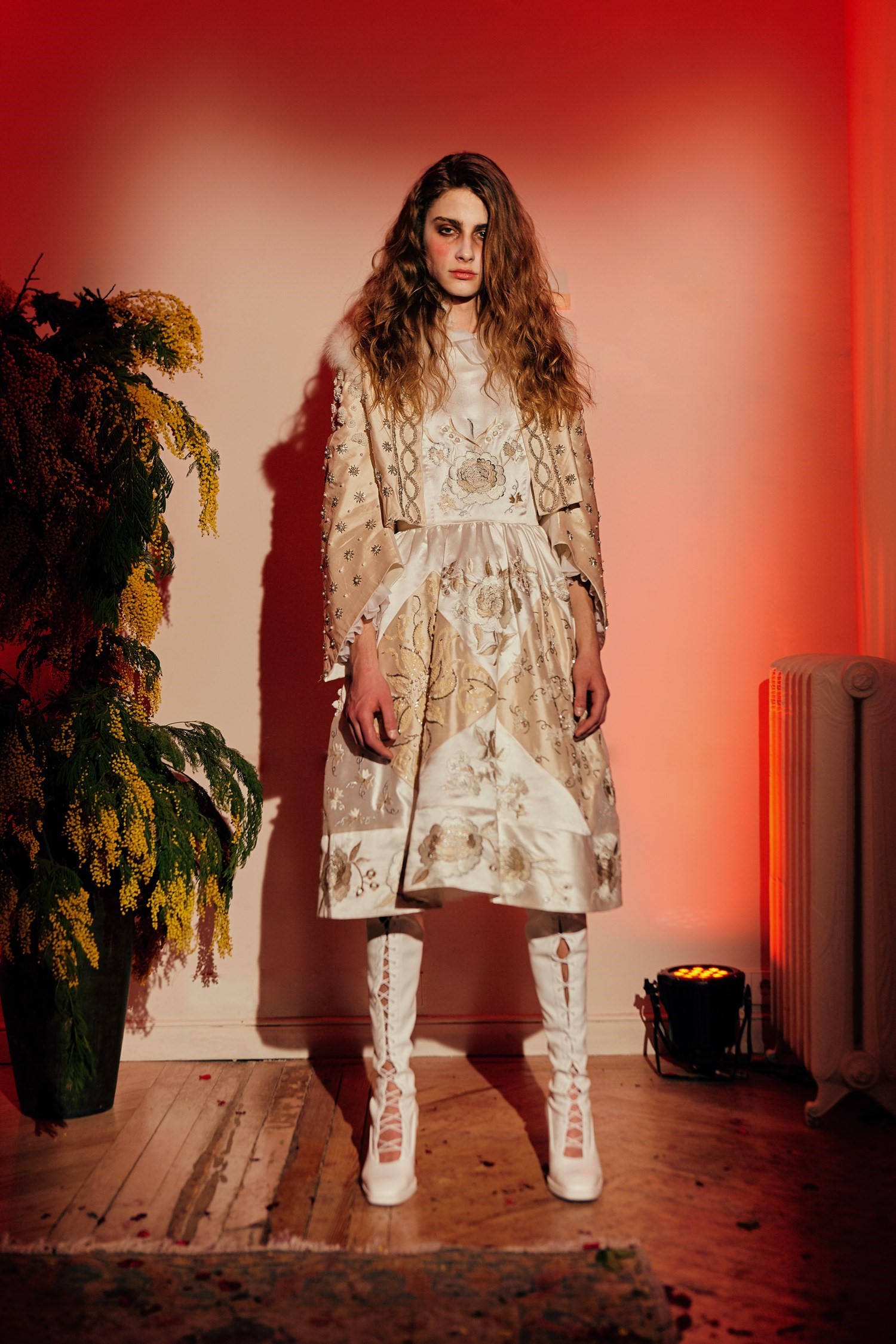
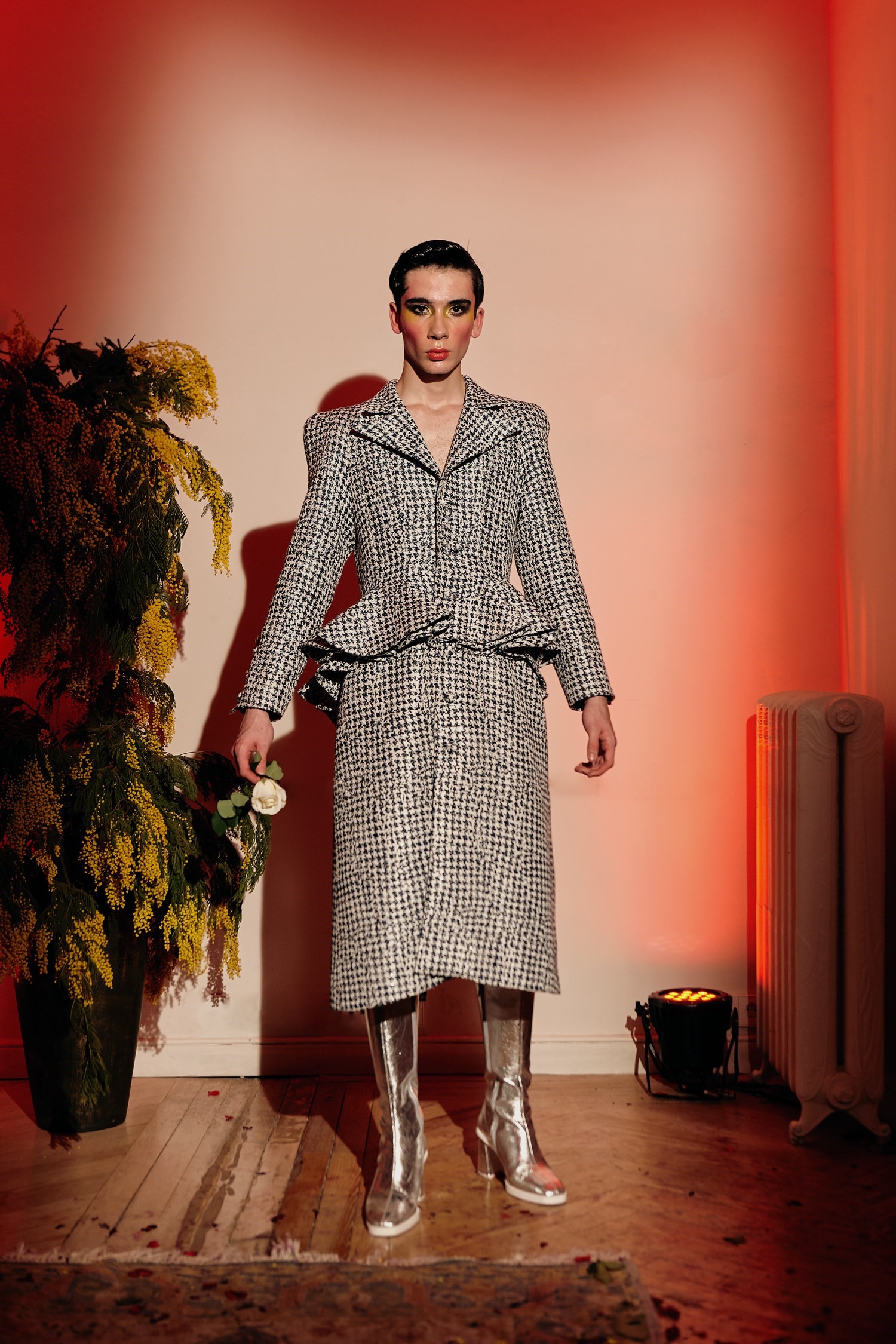
“I design for men because it is my fantasy but I think there’s an eroticism about a woman wearing men’s clothes” – Alejandro Gómez Palomo
Fantasy might be his currency, but Palomo hails from the “very traditional, quite small” city of Córdoba in southern Spain. The only child of parents who owned a restaurant, his introduction to the fashion world came via Fashion TV – he was mesmerised by John Galliano and Gianni Versace – and the hyper-hued landscape of his make-believe life, playing with Barbies at his neighbour’s house and dress-up in his mum’s closet. There must be thousands of his sketches scattered throughout his hometown, he tells me.
At 15, a school trip to London was formative. “It completely blew me away – there wasn’t that fashion context where I was from. Seeing boys in skinny jeans... The whole energy. I thought ‘oh my god this is the place I want to be’”. Within three years it was. He decamped to the city to do a foundation at London College of Communication, followed by three years at London College of Fashion, and spent five years living in the city. Supplementing his studies by working in Liberty’s designer vintage section was as important as his studies, he explains. Seeing 70s Yves Saint Laurent and 80s Lacroix up close, “from there I got the idea of communicating something much more personal with the brand. I want you to look at my pieces for your entire life and remember ‘I wore this at this time…’” A tantalising thought for sure.
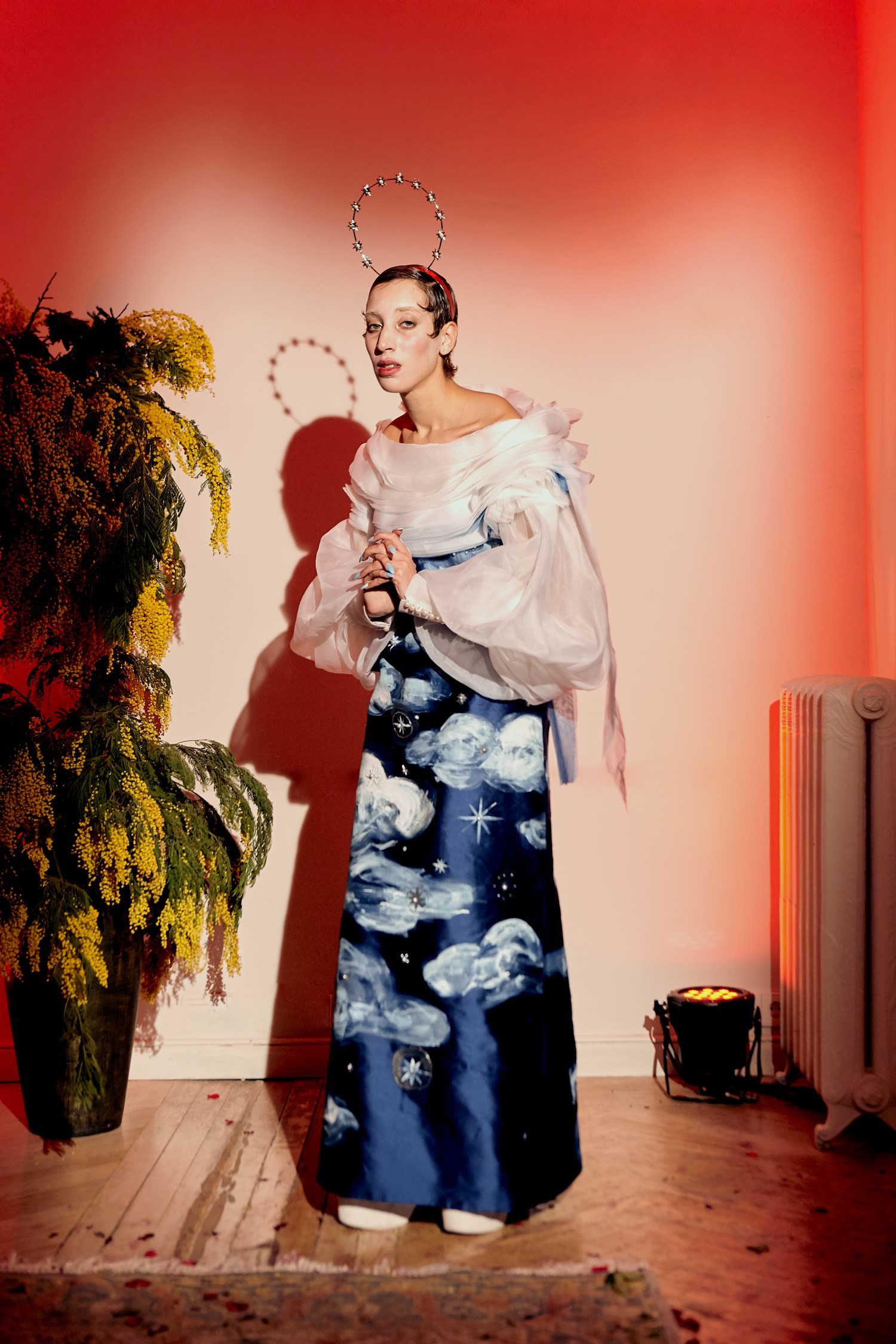
On graduating from LCF, Palomo returned to his hometown, which remains his base today, setting up a “massive studio in a traditional cortijo, with terraces, patios and orange trees all around”. You don’t get that in Bethnal Green. Like fellow Basque-born Cristóbal Balenciaga, you can certainly see the Spanish handwriting throughout Palomo’s work (the romance injected with a grittiness, even a sensual seediness, inspired by his time in London). “I tend to look more at the inside of who I am and where I was brought up,” he says of what his hometown gives him. Inspiration ranged from dressing up in Catholic attire for Easter, or going to the fair in May “with folkloric dresses with lots of ruffles and a flamenco feeling. And of course, the colours!” Today he uses local seamstresses to help conjure his extravagant vision.
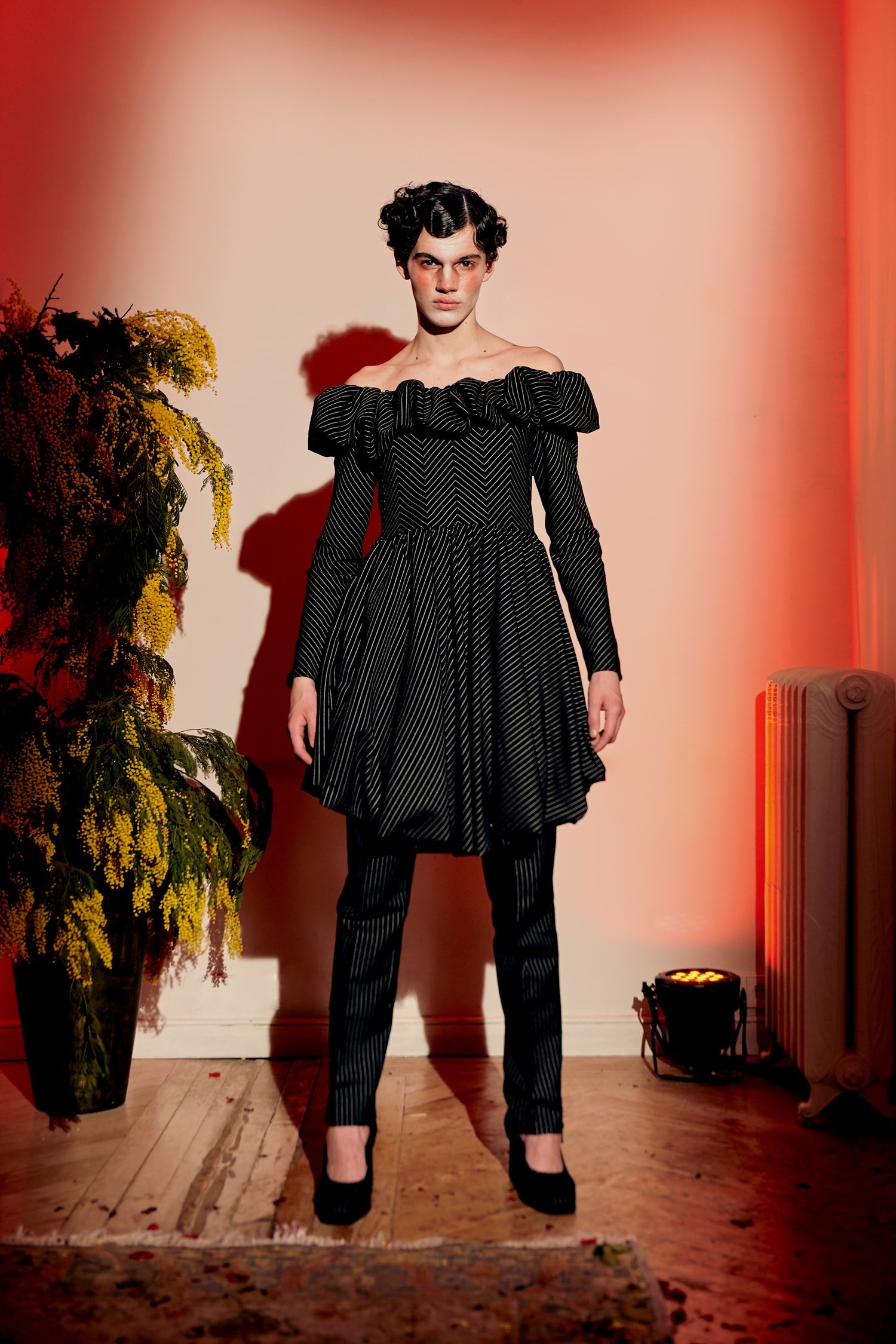
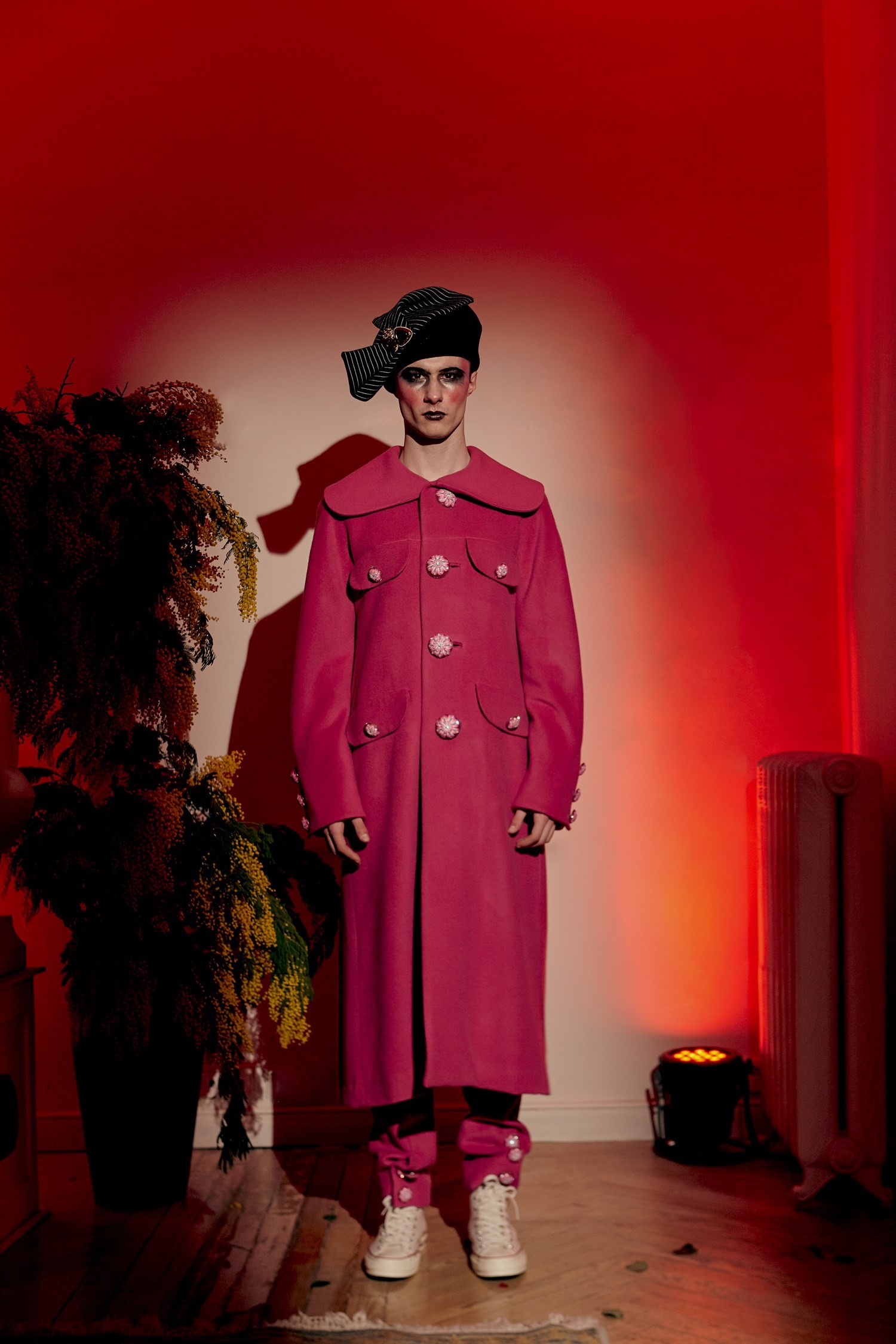
“I tend to look more at the inside of who I am and where I was brought up” – Alejandro Gómez Palomo
If Palomo thanks “being quite isolated from the fashion world” for his unique perspective, he simultaneously remains fully entrenched in the global community of the Instagram generation. Indeed, he credits the social platform with fostering an international “family” and organically growing his label. Instagram is one of the ways he casts his shows, too. Having a pretty face alone just won’t cut it; getting the brand is a non-negotiable for Palomo. “It had to be boys who really identified with what they were wearing and were actually proud when they walked out,” he explains. “It doesn’t make sense if I put my clothes on boys who don’t really care.”
Knowingly or not, Palomo is making a wider, political statement with his clothes and casting which feels more poignant than ever. Spring/Summer 2017 was shown in Moscow, and cast from a “community of gay boys from all around Russia. I had one of the most beautiful experiences of my life actually because they all felt so liberated and it gave them the power to go down the runway and be whatever they are.” You can’t miss the timely resonance in the fantasy. When the world is building walls surely it’s fashion’s prerogative to break down barriers where it can. Maybe it’s that ‘saint-sinner’ tension of Catholicism but there’s a naughty charm when Palomo talks. The clothes seem as much about the pursuit of pleasure as they do the appreciation of beauty. This season, he tossed aside the pure, romantic ideals of previous collections for something more obviously erotically charged. Called Objeto Sexual, it’s no surprise that this collection is an exploration of the “sexual self”.
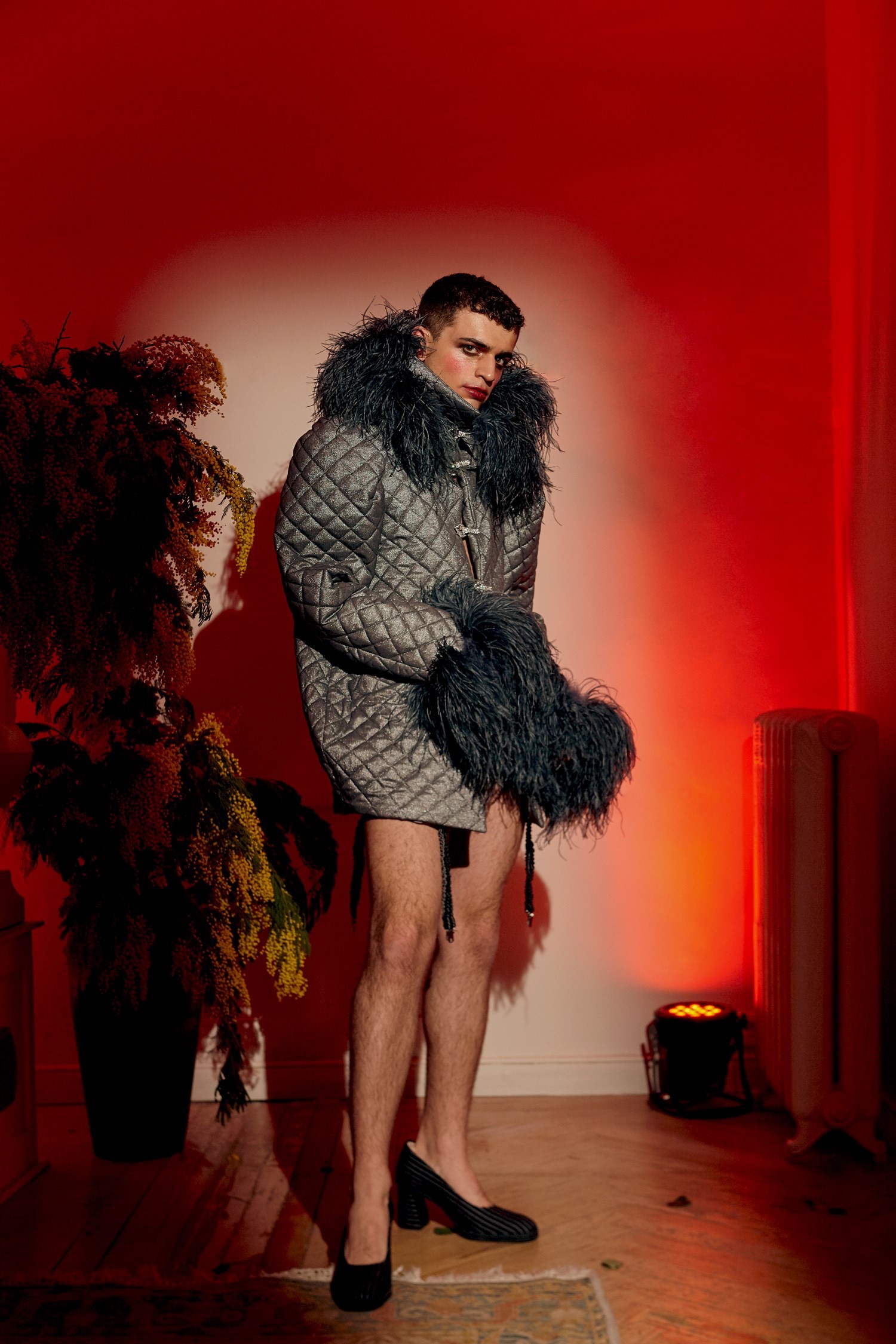
“Before I finished doing my summer collection I had this experience of seeing how boys were using their sexual power to try to get me or get to models – and I was thinking about how powerful sex is and how you can use it as a tool,” Palomo says of his jumping off point into a collection that’s at once kinky and strangely poetic. “It’s that bit you’ve got inside that you might not really want to look at it because it’s a bit dark, but there’s a stronger animal instinct.” The closing, virginal look, Palomo describes as “something quite dangerous that you can’t touch, but you really want to”. Palomo’s own boyfriend also walked in the show. An actual, intimate love story in the midst of all that spectacle – what could capture that delicious interplay between the erotic and the romantic better than that? Because what fashion needs – what we all need right now – are more lovers.
